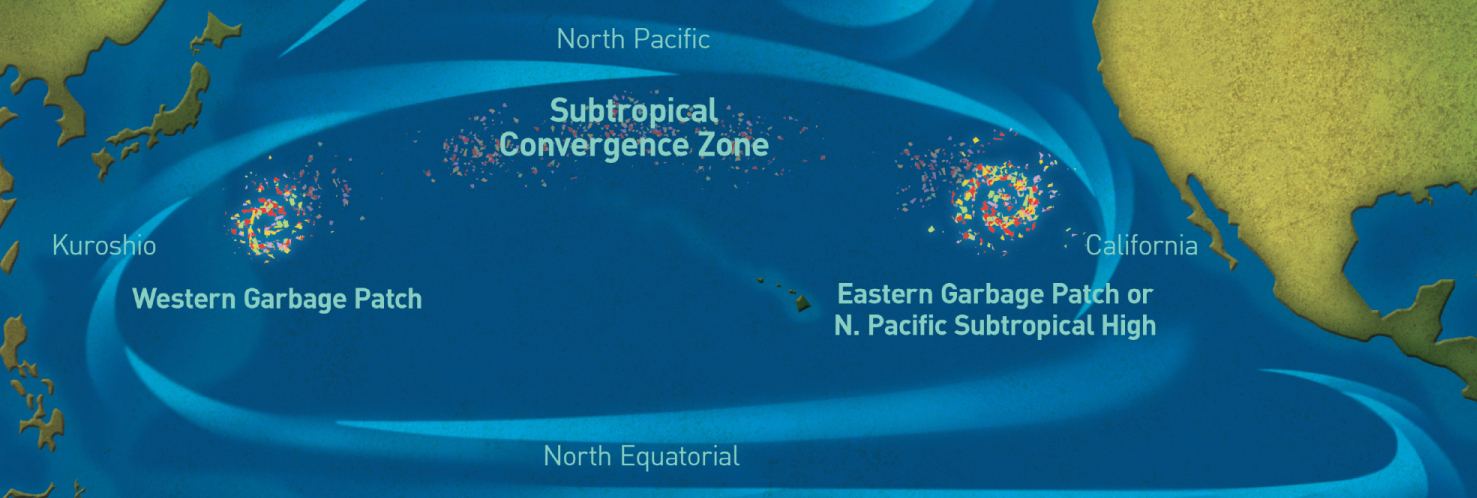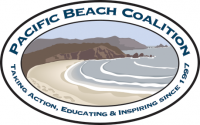Plastic & Pacific Garbage Patch
 Pacific Garbage Patch Educational Resources
Pacific Garbage Patch Educational Resources
The Great Pacific Garbage Patch is a collection of marine debris, mostly plastic, churning in the North Pacific Ocean. It is an underwater vortex created by ocean currents, and is almost entirely made up of tiny bits of plastic, called microplastics which can’t be seen by satellite imagery or the naked eye, and which make the water appear as cloudy soup. This soup is intermixed with larger accumulating non-biodegradable debris and plastics breaking into tinier and tinier pieces.
About 80% of the debris comes from land-based activities in North America and Asia. Trash from the coast of North America takes about six years to reach the Great Pacific Garbage Patch, while trash from Japan and other Asian countries takes about a year. The remaining 20% of debris comes from boaters, offshore oil rigs, and ships that dump or lose debris directly into the water. The majority of debris—about 705,000 tons—is fishing nets. More unusual items, such as computer monitors and LEGOs, come from dropped shipping containers.
- 5 Gyres
- Algalita Marine Research Foundation
- Project Kaisei
- NOAA Marine Debris Program
- Synthetic Sea – Algalita Marine Research Foundation (video)
- Photographer Chris Jordan’s blog, www.midwayjourney.com, documents the impact of plastic debris on the Laysan albatross population. Find powerful videos on their Youtube channel.
Marine Debris Photos – NOAA Marine Debris Program’s flickr page.
Reports on the topic of Marine Debris:
- Plastic Debris in the California Marine Ecosystem, A Summary of Current Research, Solution Efforts and Data Gaps. September 2011. California Ocean Protection Council and California Ocean Science Trust
- Plastic Debris in the Ocean, UNEP Year Book Emerging Issues in Our Global Environment 2011
Access California Coastal Cleanup Day historical data, including “top ten” lists of debris items, and collection data dating back to 1989.
